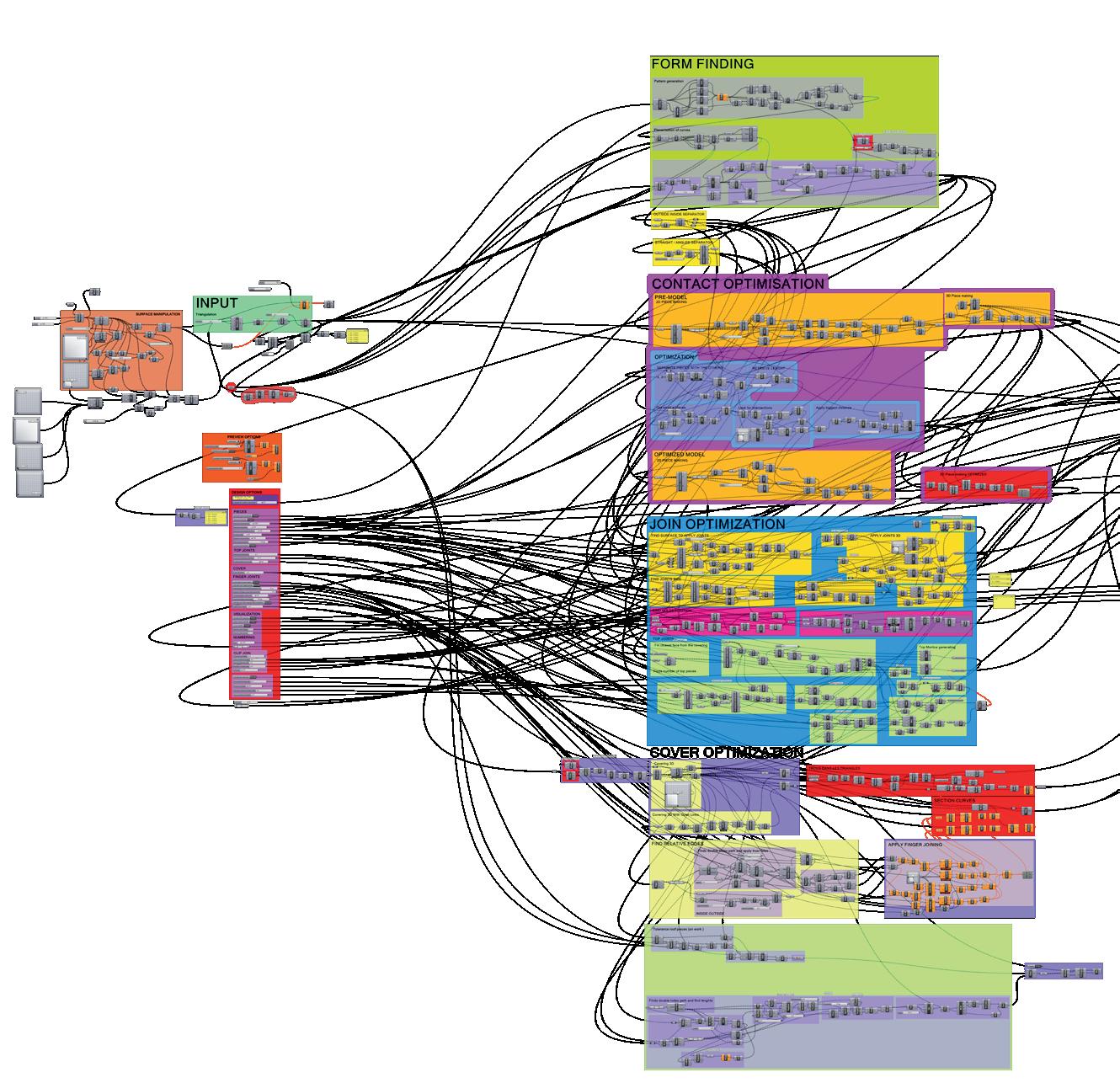
1 minute read
Eccentricity and cross-section
c. Eccentricity and cross-section Eccentricity is the distance between the centres of the sections of two nexors in contact. It is the sum of half of the two superimposed nexor sections. While this may seem elementary, this variable is of paramount importance. If it can be easily assessed in the case of a single RF, it is one of the most difficult data to calculate in the case of a nexorado, we will observe this later in the form-finding.
These notions are the founding stones of what makes up the nexorades. These parameters, at the scale of a structure, develop singular patterns, necessary for reciprocity. This is where a whole game is created in relation to the algorithm, it is necessary to use these variables in order to build patterns, bi or three-dimensional and to introduce modifiers that will give them the particular complexities that it has already been possible to see in the few examples previously mentioned. These compositions are called tesselation and form a geometric symbiosis with the nexorades.
Advertisement
Excentricity Section
Reciprocity through tesselation
To be able to design reciprocal structures, it is necessary to speak of tesselation, also called patterns or patterns. These three words refer to the repetition of one or more fragments, mainly by translation, symmetry or rotation. These are essential spatial compositions to understand the realization of reciprocal frameworks. We will first approach the concepts that characterize a tesselation, which will help us to understand the work that a team of researchers has presented to the SYGGRAPH 20131 on the development of a program capable of generating reciprocal structures on any surface from tubular elements - as for the Mount Rokko observatory -. Although their software is not yet available, they have provided us with a very useful graphic overview to get an idea of the variety of possibilities, shapes and patterns that reciprocal structures can have. The one and only rule is that all nexors must support two of their congeners. A new side of
1 C’est une CommunAuté internAtionAle de CherCheurs, d ’ Artistes, de développeurs, de CinéAstes, de sCientifiques et de professionnels du monde des AffAires qui s’intéressent à l ’infogrAphie et AuX teChniques interACtives. — https://www.siggrAph.org/About/








